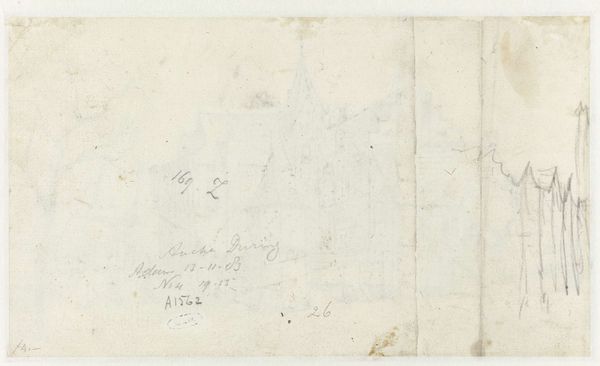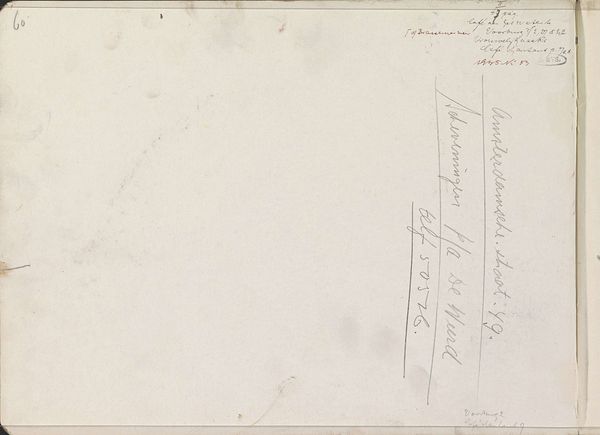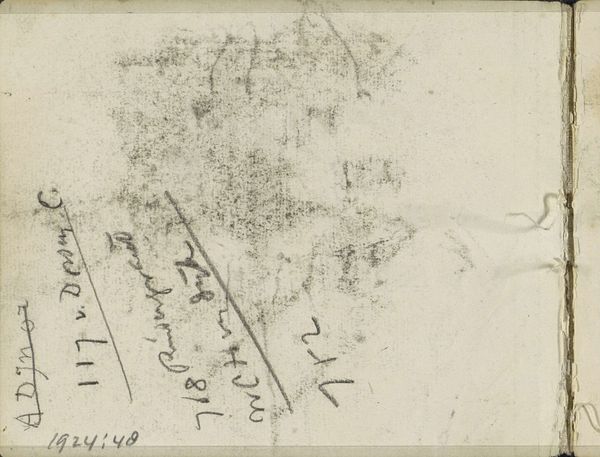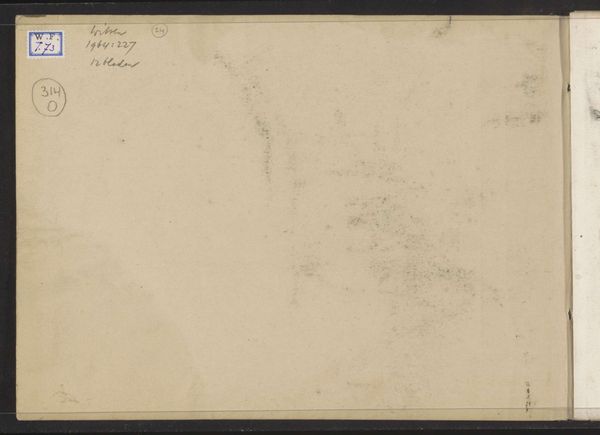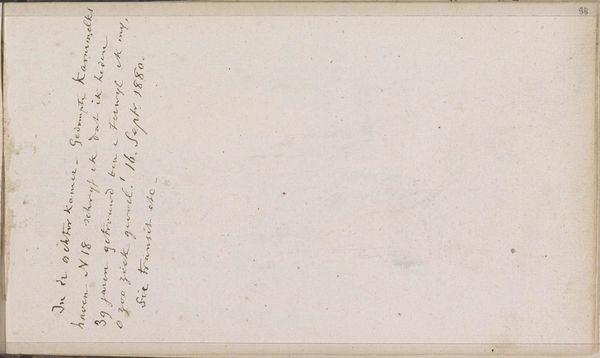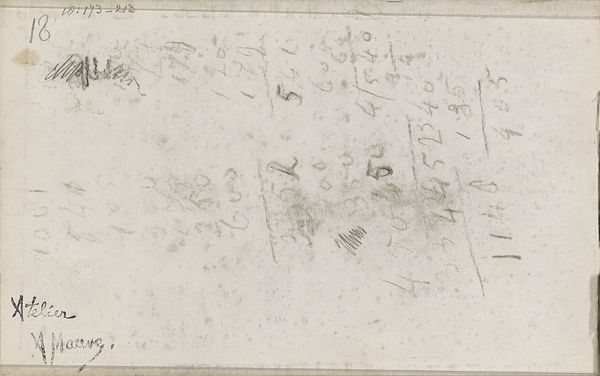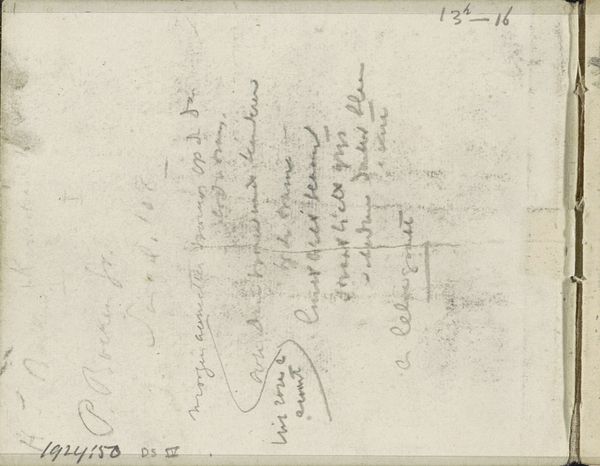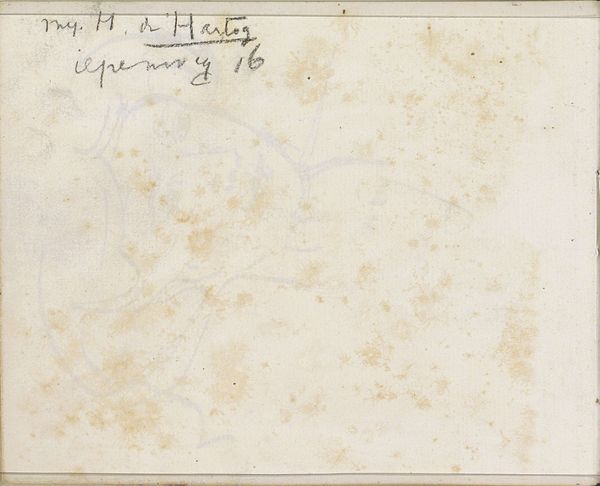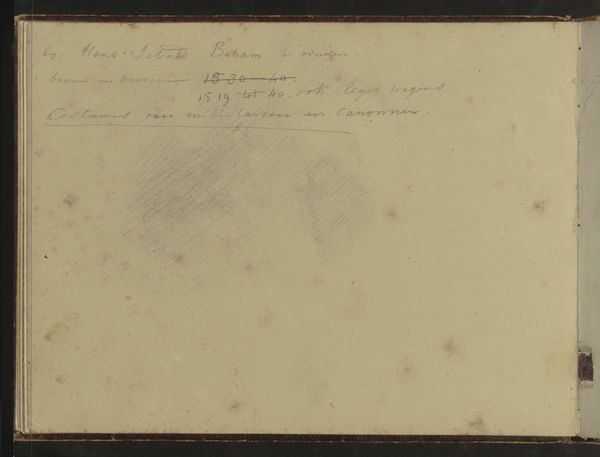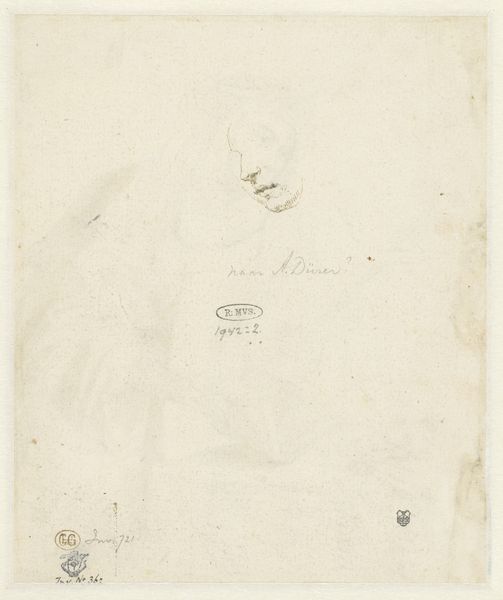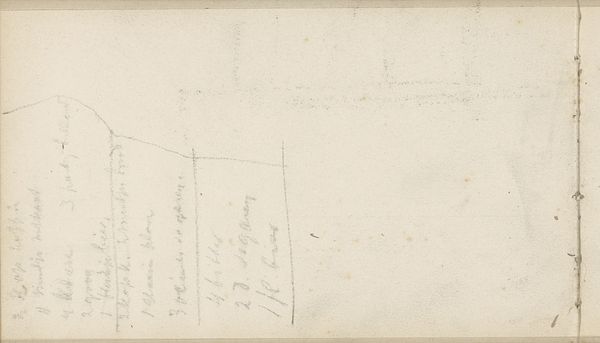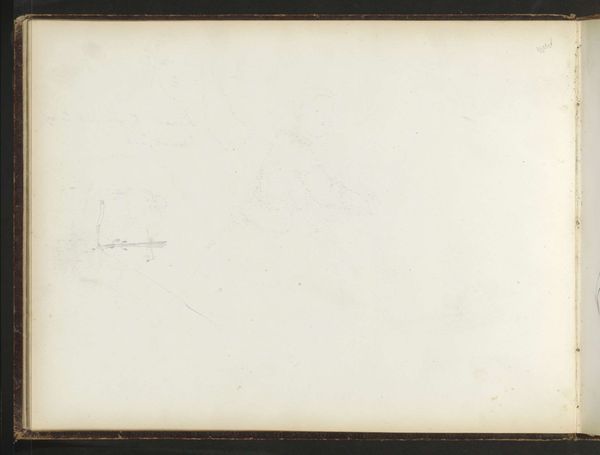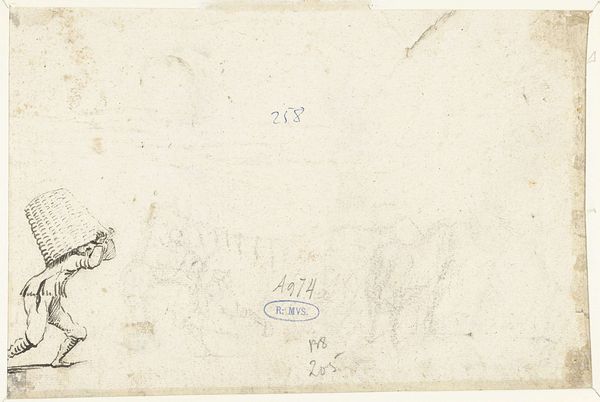
drawing, paper, ink
#
drawing
#
aged paper
#
hand written
#
hand drawn type
#
hand lettering
#
paper
#
personal sketchbook
#
ink
#
idea generation sketch
#
fading type
#
ink colored
#
sketchbook drawing
#
sketchbook art
Copyright: Rijks Museum: Open Domain
Curator: Let’s turn our attention to "Schutblad B," a drawing rendered in ink on paper around 1920 by Johan Antonie de Jonge. It looks like a page torn from a sketchbook. What's your initial take on it? Editor: Ghostly! That's the word that leaps to mind. Like a whisper from the past, fading ink and aged paper, kind of feels like you're looking at a half-remembered dream. It makes you wonder about what else was recorded within this artist's journal, you know? Curator: Indeed. The sketchbook holds a unique position in art history—as a space for unfiltered ideas. The visibility of process is the thing: notes, preliminary sketches, trial compositions. It's all about the unfolding creative process, not so much a pristine finished piece intended for formal exhibition. Editor: That's it! A bit like eavesdropping, or peering into someone’s creative mind through the keyhole. Do you see those barely-there handwritten words scattered about? The smudges, and light abrasions? It all kind of blends, so its not entirely readable, but this faded quality is compelling nonetheless! Like an echo waiting to be properly heard again... Curator: Exactly. The very texture of this aged paper carries meaning—revealing the passage of time. It's as if the artwork has acquired a patina that speaks to history, preservation and loss. Editor: Definitely. The paper looks almost as fragile as memory itself. What strikes me most, perhaps, is this almost accidental beauty—in the imperfections, the stains. Its about uncovering unexpected details that resonate in ways you don't realize until they're staring right back at you. Curator: Well put! This sketchbook leaf shows just how artworks can take on new layers of cultural value—evolving with time as interpretations of artistic expression continue changing for future audiences. Editor: Yeah! Who knew faded ink and barely legible scrawls could tell such stories. It's like finding treasure where you least expect it, isn't it? The stories it holds without actually even saying anything definitively, it can be just the tip of the iceberg. Curator: Precisely, it is what it invites, what the viewer unearths to meet in that middle space and make something with the art as well. Editor: I'm here for the whispers then. And all its subtle clues waiting to be discovered.
Comments
No comments
Be the first to comment and join the conversation on the ultimate creative platform.
